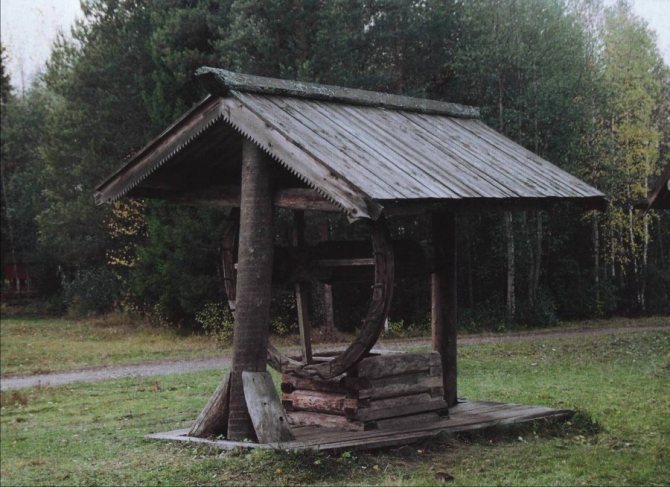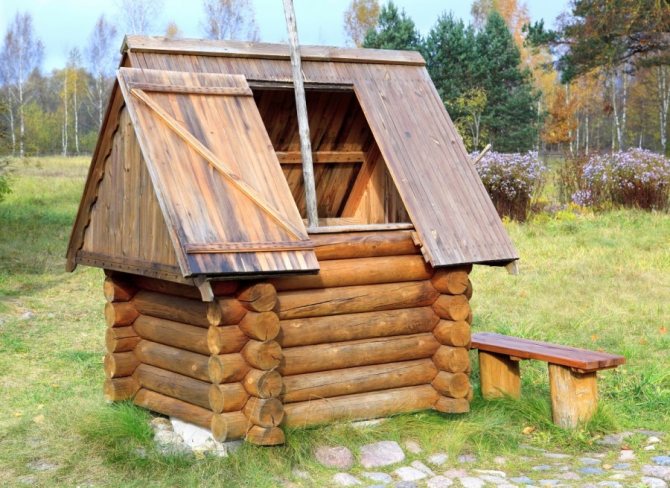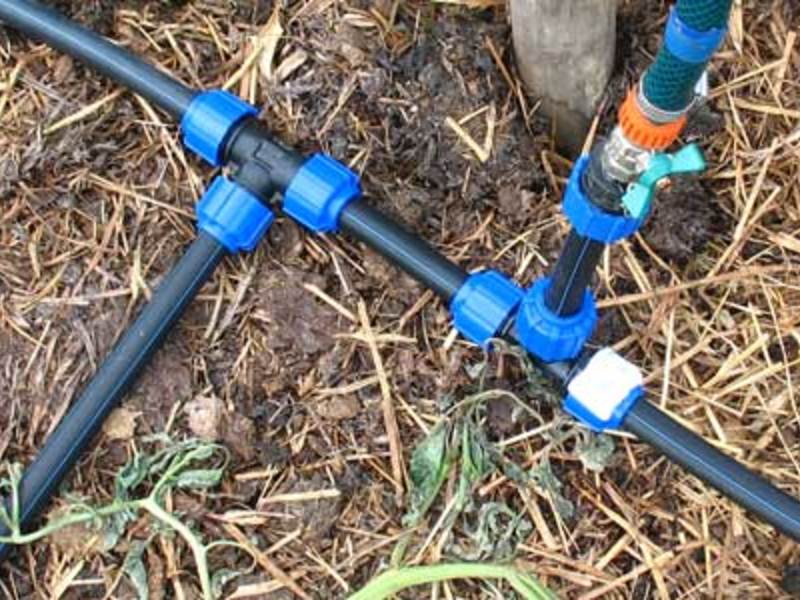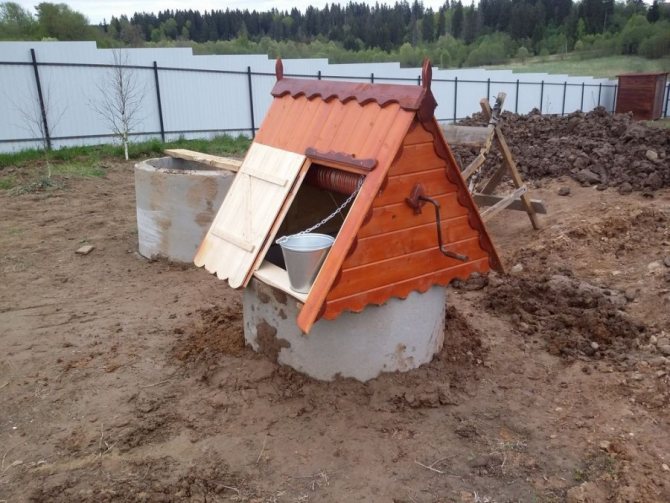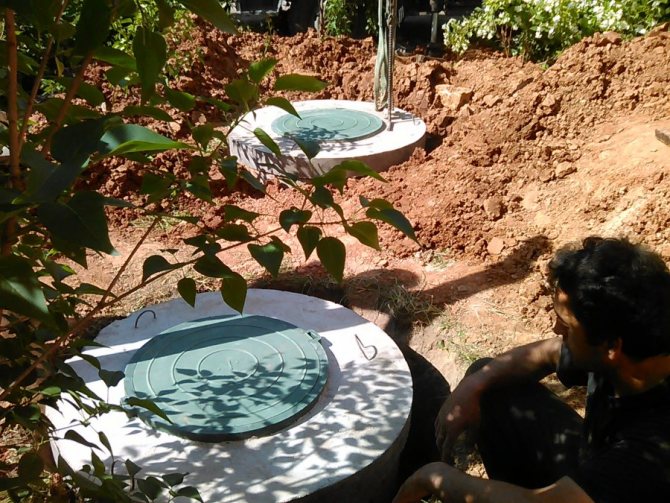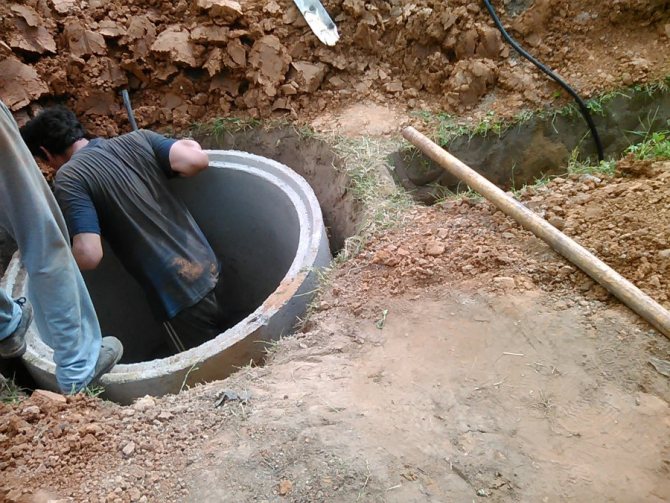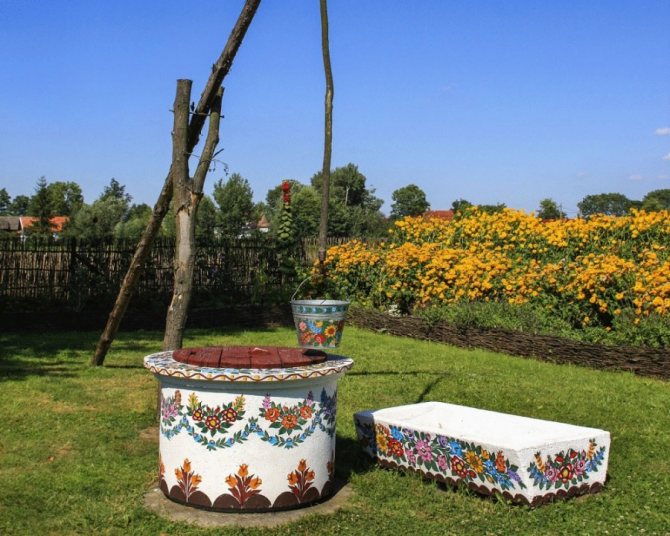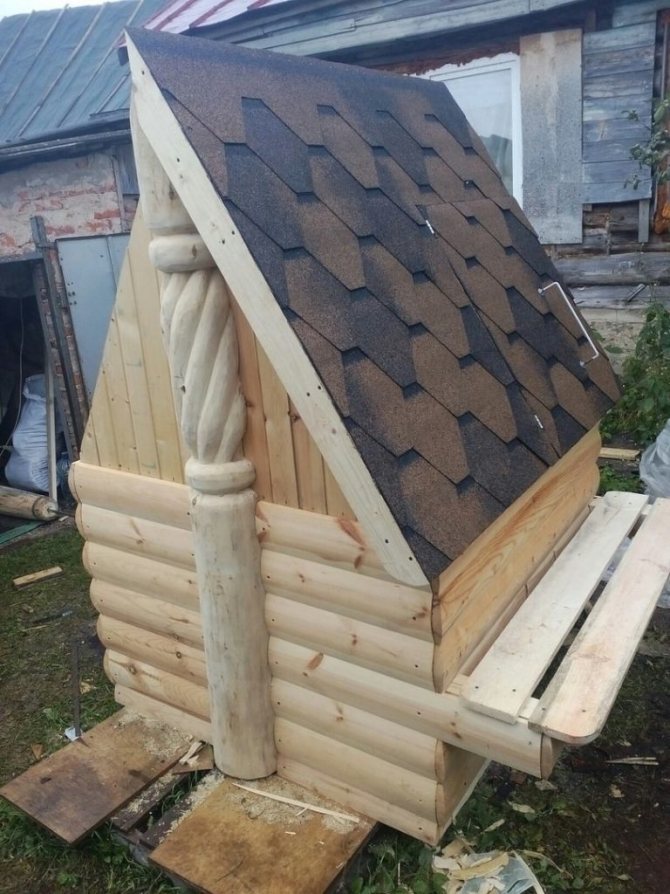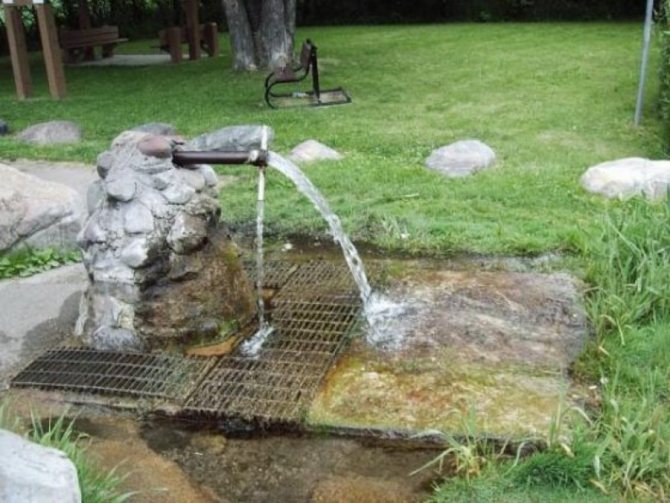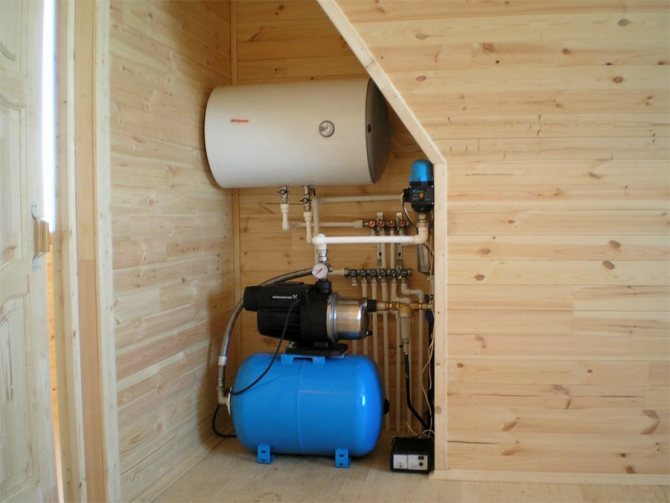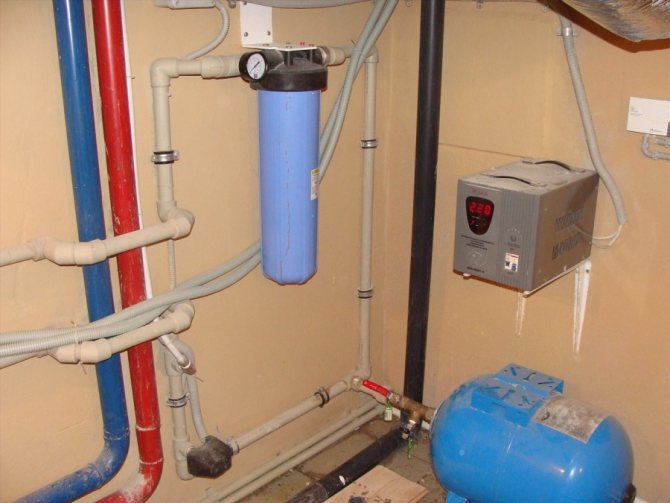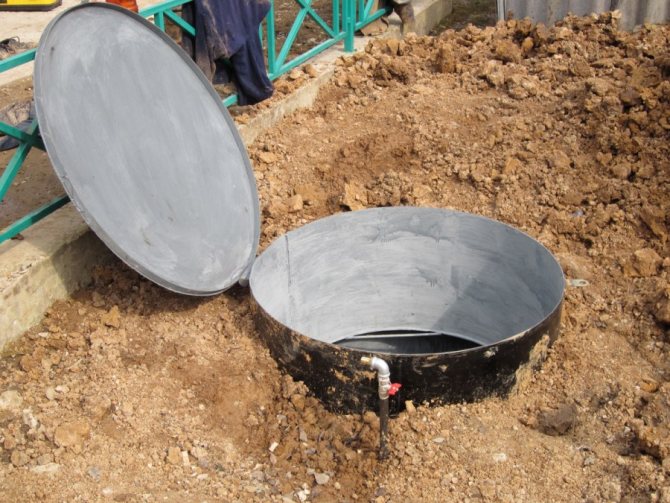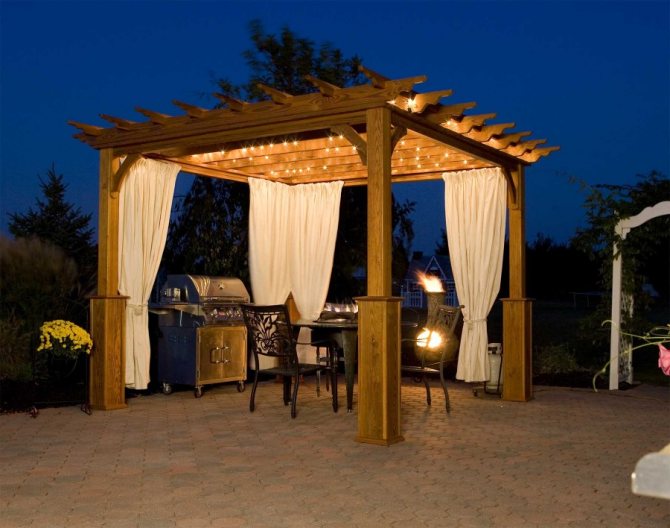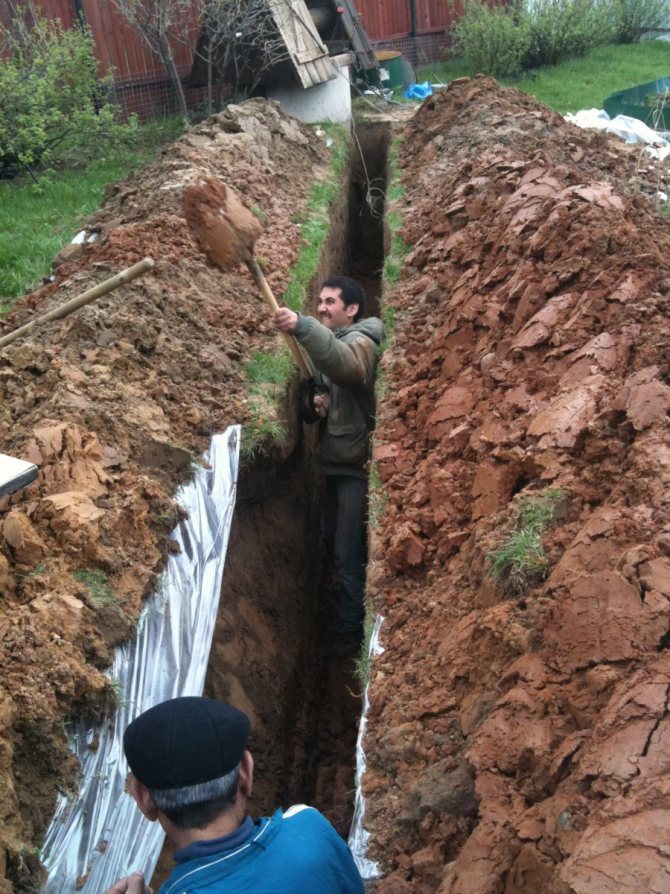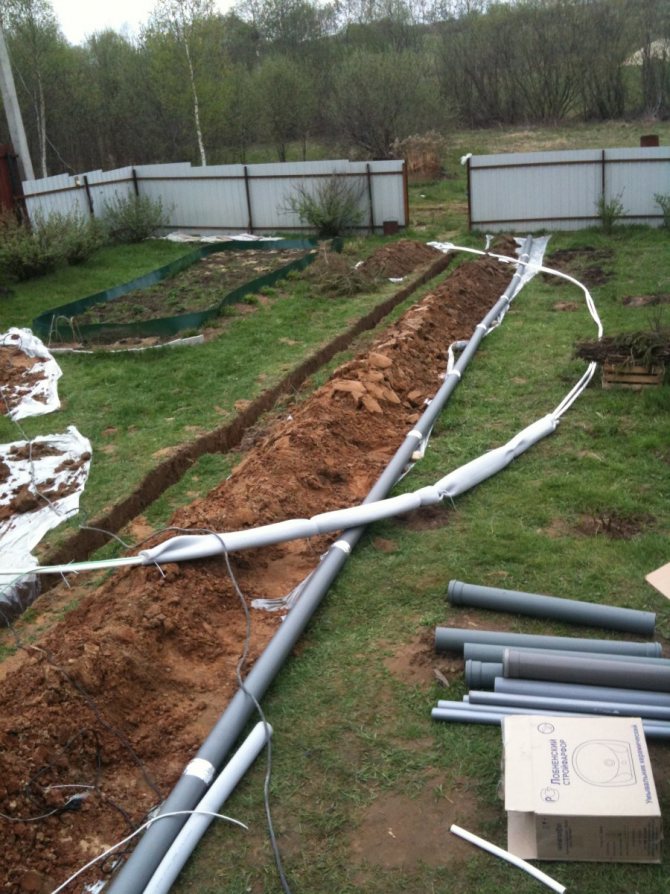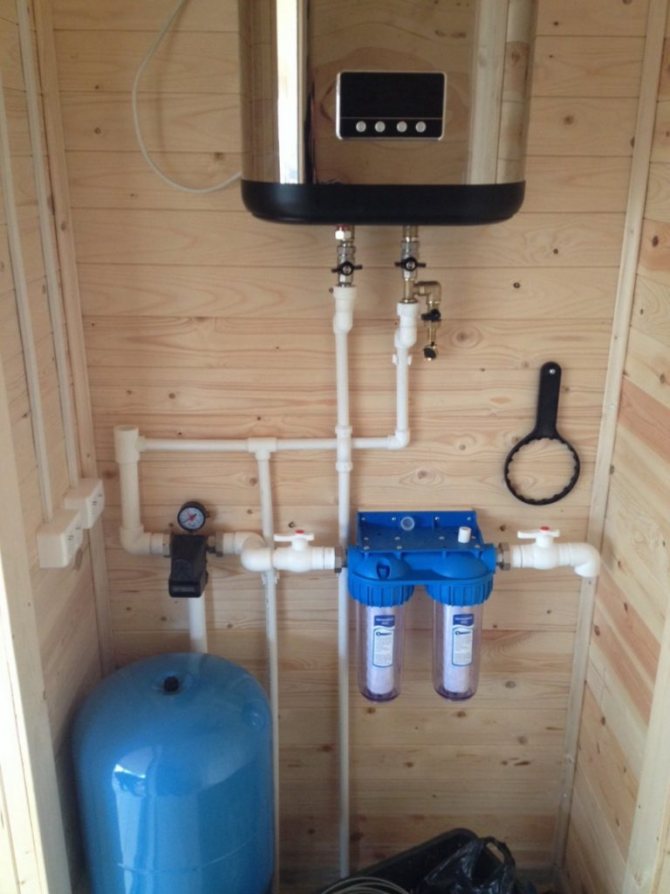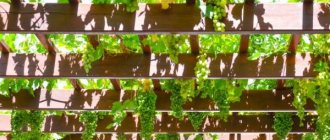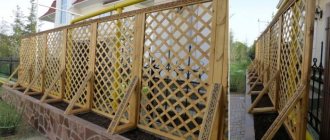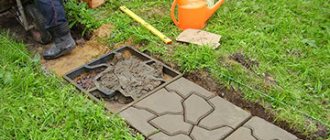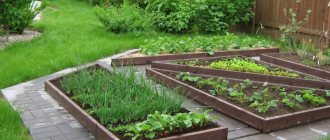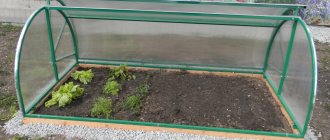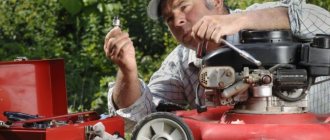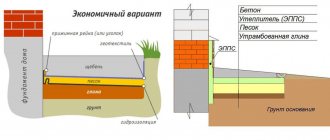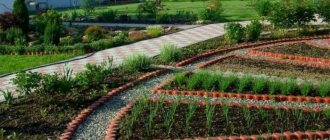In a city, when all the amenities are at hand, people hardly realize their value. However, arriving at the dacha, many owners decide to conduct a water supply system on their site, after they are faced with a lack of water. After all, not everyone will like wearing it in buckets. Water is also needed for the construction of a country house. Even if it is a frame and for its construction it is not required to knead the solutions, then you simply cannot do without liquid to "grease" or "gravy" the foundation.

The use of healing moisture will be needed for the summer cottage and for its intended purpose, namely for watering the garden and vegetable garden. Water is also needed to wash the car, as well as the yard paved with paving slabs. It will also be needed for various household needs. That is why the arrangement of a water supply system in the country is a very important issue. And if you don't have it yet, then it doesn't matter. It is not at all difficult to build a water supply system in the country yourself. And this is confirmed by the reviews of many owners who have already completed such work. You just need to decide on the source of moisture, on the type of systems, prepare all the necessary tools and materials in advance, and then start performing all the actions that you can familiarize yourself with in this article.
Calculation of water consumption
As the well-known proverb says, before cutting off, you need to measure seven times. This popular wisdom is also applicable to the arrangement of the water supply system in the country. The owners need to determine the amount of liquid that will be required for normal living in the summer area of the whole family. Moreover, judging by user reviews, a small margin must be taken into account in the final figure.


The calculation is made taking into account all the planned points of water intake and water discharge. At the same time, it is necessary to take into account such objects as a swimming pool, a bathhouse and a sauna. The owners should take into account the area of the orchard, as well as the area allocated for growing vegetables. After all, it is unlikely that it will be possible to harvest a crop in the fall without watering.
With each liter of life-giving moisture, which will be counted in the volume of consumption, the source of water supply should become more and more abundant. What can it be?
We select pipes
Here you need to correctly calculate the required amount. Take note of the incline and the number of turns.
Having correctly identified, you can take them in the desired manufacture, they differ in the angle of rotation and this will greatly facilitate the work:
- The diameter of any pipes made of different materials (steel, polypropylene, metal-plastic) must be from 32 mm.
Attention: All connecting seams must be reliable and tight, otherwise there will be a risk of the pipe breaking off when the water pressure increases when using the water supply. Pay special attention to this.
- When choosing pipes, you should pay attention to the fact that the material of their manufacture is food grade, and not technical. Be sure to check it out;
- We need to supply pipes to the room, the trenches from the well to the foundation of the building must be at least one meter deep. It is important that the level of pipe laying in the trench is below freezing in the ground in your area. It is necessary to provide reliable protection by covering the pipeline with insulation (see How to insulate a well correctly). For this, mineral wool is used.It is even better if for heating you still lay a special electric cable that will provide heating and prevent the pipe from freezing;
- A ground-based piping option is also available. In this case, measures to insulate the external water supply must be carried out without fail. The pipes are laid directly on the ground, or in a preliminary deepening. In parallel, a heating electric cable is being laid, but in this version it must already be present.
Well
In cases where the dacha is used only in the warm season, as well as as a place for rest, the water consumption will be insignificant. To equip a summer water supply system in the country, it is enough to make a shaft well. It is quite simple to construct and has a relatively low cost. In addition, work on the construction of a mine well can easily be done by hand. It is powered by groundwater with a depth of 4-15 m.
The structure of the mine well is quite simple. Its design is a head located above the ground, as well as a log house (usually a 25 cm thick timber is taken for it) or several reinforced concrete rings in the soil.
The well shaft must be deepened into the aquifer by 3-4 meters. At the bottom of this water intake point there should be layers of sand, gravel and crushed stone, each of which is 20-25 cm thick. In the future, such a bedding should become a kind of natural filter for water purification. Many owners make holes in the side walls of concrete rings to increase the amount of moisture entering the well. Judging by their feedback, this significantly increases the water intake. Further, a submersible pump is installed at the bottom of this shaft.
Of course, the amount of water that a shaft-type well can give to the site cannot be calculated in advance. It will be possible to determine the volume of liquid after its construction. To do this, set the amount of water that entered the well by gravity, and after being pumped out by the pump, determine the time for filling it to the previous level.
Folk ways of how to find water yourself at a summer cottage
There are quite a few popular ways to search for water at a summer cottage, but it is worth remembering that most of them detect more riding water than deep springs.
Popular folk ways how to find water yourself at a summer cottage, you can count on one hand:
- With the help of clay pots, which are pre-dried in the sun, then they are placed on the site at night with the bottoms up. If by the morning a lot of moisture (condensation) forms inside the pot, then water is located shallowly in this place. A modern adaptation of this method, instead of pots, uses silica gel, which is pre-dried, weighed and laid out over the area overnight. During the night, the gel absorbs moisture, adding weight. Where there will be a greater proportional weight gain, the closer is the water source.
- Weather manifestations, more precisely in dry weather, in the early morning, fog is necessarily found above the shallow location of groundwater. Such fog is the last to disperse, moreover, in such meta, an accumulation of midges is often found, which is extremely sensitive to moisture.
- Indicator plants and animal helpers are an excellent way to determine underground streams, and not only upstream or groundwater, but even at a depth of about 20-30 m. Plants such as wild rosemary, wood lice, and cattail love water. A spreading birch with a twisted trunk will show the shallow location of powerful water streams. Coniferous trees, on the other hand, do not like the high location of water, so digging deep in the habitat of pines is necessary. In hot weather, pets try to find moist and cooler ground, so they often dig holes exactly where the water is shallow.
- Dowsing method for detecting water underground streams. A difficult method, but the most effective and showing the deep location of water resources, because their location changes the energy field of the earth. The method is very ancient. Previously, they used a specially shaped willow or grape vine for it, but today they have simplified everything and began to use dowsing frames made of thin copper or aluminum tubes. Numerous slow passes through the site will show the convergence of the frames or the lowering of the vine to the ground - this is the place of the energy swirl from the water flow.
After studying the tips, how to find water at a summer cottage yourself, it is worth thinking about the prospects and difficulties of self-mining, because this is not an exact science, but only assumptions. In reality, things may be somewhat different, both in the direction of advantages and in the direction of disadvantages.
Well
Often, aquifers lie below a depth of 15 m. In this case, the owners of the suburban area will need to drill a well. Such structures can be “on sand” or “on limestone”. The first option is much cheaper, faster and easier. Even an inexperienced person can handle drilling such a well with the necessary tools. To equip this water intake point, you will need a steel casing pipe (125-133 mm in diameter), a filter mesh and a pump. Such a well is capable of providing water in a volume of 1 cubic meter per hour. This, judging by the reviews of the owners, is quite enough for a summer cottage.


The disadvantage of the well "on the sand" is insufficiently clean water, which over time (4-5 years) leads to silting of such a water intake point.
A well "for limestone", or, as it is also called, "artesian", will cost a summer resident a round sum. Moreover, the owners are unlikely to be able to drill it on their own. However, it will last 30-75 years. The specific period will depend on the concentration and amount of suspended matter in the groundwater. It produces such a point from 5 to 100 cubes per hour.
Water source
In the absence of a centralized water supply, there are several options.
- Open reservoirs.
- Wells.
- Wells.
The expediency of the choice is determined only in relation to the specific conditions of the location of the site. It is also necessary to find out what sources of water are used in this area, whether it is suitable for drinking.
The economic component is also important. A lake or river will be eternal suppliers, the life of a well or well is limited. The main costs just fall - in contrast to the trench to the river - to reach the aquifers.
The amount of water consumed varies over a fairly wide range. The following indicator can serve as a guideline: 1-1.5 m3 per hour overlap the most peak moments of water parsing for the needs of a family of 4 people.
Open reservoirs
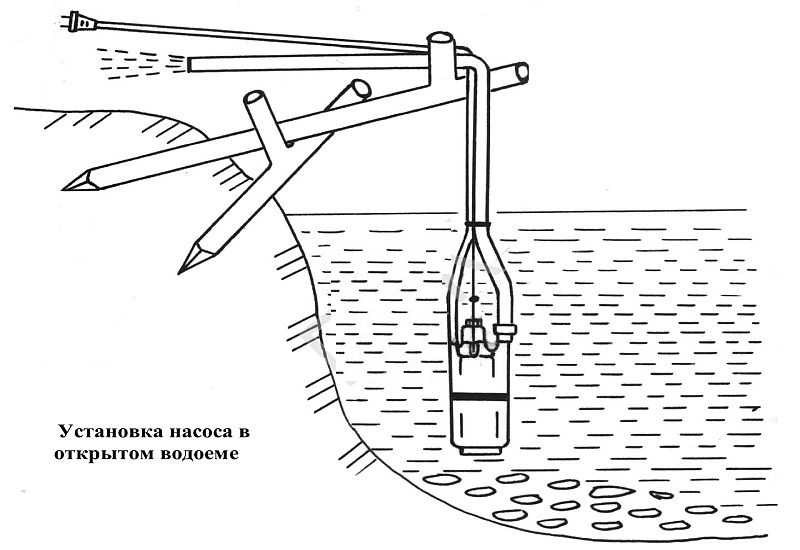

The least costly way to conduct a water supply to a private house, to ensure the watering of the site. In addition, such water contains a small amount of hardness salts. The only drawback: it is almost always unsuitable for drinking, as it can be a source of pathogenic microflora.
This is especially true for stagnant ponds and lakes. Taking into account the fact that many people in the city do not trust tap water, they drink only bottled water, this problem is quite solvable in the country.
Wells
Dug or driven (Abyssinian) wells work only where the aquifer passes at a depth of no more than 25 meters. Driven wells have replaced wells, but if you have only your own hands, confidence in the result, an Abyssinian well is the best option.
A dug well is a difficult hydraulic structure. The decision on its construction is made based not only on the presence of a layer of water, but also on the type of soil. Optimal - clay, loam. Peat, sandy soils are dark water with a smell or quicksand.
Dug wells are subdivided into mine and key. The mine passes to the lens or layer of water, the key is placed on the spring. In modern conditions, the well shaft is reinforced with reinforced concrete rings of the KS brand of various diameters, the wooden frame is no longer used.


Low water flow rate is the main risk factor for well water supply. An improperly arranged water intake (there are three types: imperfect, complete, with a sump) is a complete fiasco. Water quality requires control: a formally made clay castle leads to the ingress of groundwater into the well. Its device can only be entrusted to a professional team.
Well
The most reliable water supply for a private house on land or a summer cottage. Modern mechanisms and technologies make it possible to arrange it (in the absence of boulders in the ground) in a part-time working day. There are wells for sand and artesian wells.
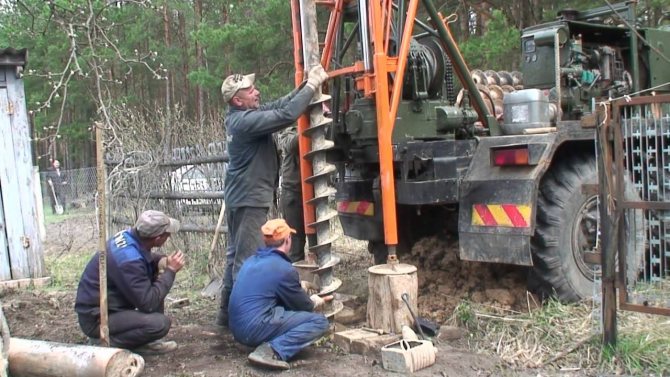

The overwhelming majority are drilled in the sand: the extraction of artesian water requires significant investments. In the first case, sandy veins saturated with water serve as a source, in the second - porous limestones. The sand fraction directly affects the service life of the well: a large one - unlike a fine, dusty one - will not sand it.
Water supply from a properly arranged well up to 60 m deep will fully satisfy all needs, regardless of the season, for at least 5 years. The quality of the water is good, but you have to put up with the high content of calcium and magnesium salts. Scale on the walls of the kettle speaks of their excess.
Winter or summer?
The water supply scheme in the country can be different. If the owners use the site only from spring to autumn, then there is simply no point in spending money on an expensive capital system. In this case, they can choose one of two water supply options - collapsible or stationary. The first of them is convenient in that the owners remove all the hoses at the end of the season and put them in a storage room. This will ensure that the material does not deteriorate. At the same time, the hoses will last longer. When laying such a water supply system, you don't even have to pick up a shovel. Communications will run over the surface.
A little more effort will require the installation of a summer version of a stationary water supply. To equip it, you also do not need to purchase and install complex equipment. The difference between such a system and a collapsible one is that the pipes for the water supply in the country must be carried out underground. Moreover, after the end of the season, they do not need to be removed. The main condition for the safety of a stationary water supply system will be the absence of water in it in winter. Otherwise, judging by the reviews of the owners, the frozen liquid will rupture the pipes.
Winter water supply in the country is a more complex system. When laying it, many nuances must be taken into account - from the natural slope of the relief to the depth to which the ground freezes. In this case, it is mandatory to use a pump that will provide the water pressure. In other words, the winter water supply in the country should be no different from the one that is laid in private residential buildings.
The device of a typical plumbing system
In a private house, a standard plumbing scheme includes nodes and their components:
- pipes;
- pump and filters;
- pressure regulator;
- water accumulator;
- drain device.
In addition to the average set, this may include heating elements. It all depends on the complexity and functionality.
Types of pumps for raising water
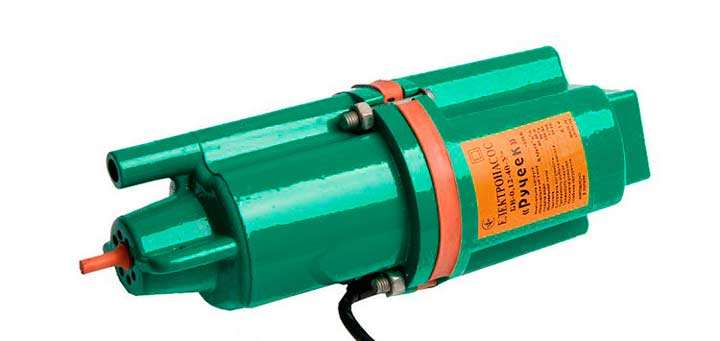

Trickle pump, the simplest solution for giving
A water pump is needed to raise the water to the depth. It depends on the source of water intake (a simple well or water well), the depth, the required volume and productivity, and financial capabilities.
There are two types of sediment:
- Surface - makes it possible to pump water from a depth of up to 8 meters, is located on the surface of the water surface or on the ground.
- Deepwater - capable of pumping water from great depths, works due to immersion in the aquatic environment. May be:
- Vibrating - acting through the membrane, requires cleaning and frequent maintenance;
- Centrifugal - works due to the rotation of the blades, is reliable and has good performance.
The connection of the pump to the water supply system, the quality and durability of operation will depend on the type chosen.
How to choose the right pump?
What pipes are suitable for a country water supply
Drinking water is transported through pipes with a cross section of 1 or ¾ inch. When laying a water supply system in the country, it is important to take into account the material used. In modern conditions, polypropylene and polyethylene are widely used.
Both materials have their own individual differences:
- Polypropylene products cost more, require special equipment for joining, soldered joints are distinguished by their strength and durability.
- Polyethylene pipes are cheap. However, expensive metal parts are required for the connection, which cannot guarantee strong joints.
How to make a simple plumbing for the summer from HDPE?
For winter construction, the pipeline is placed in a polypropylene “cover” that protects it from freezing. Under the cover, a heating cable runs parallel to the pipe, which maintains a positive temperature. Of course, it requires negligible energy costs.
Dismountable and shut-off valves
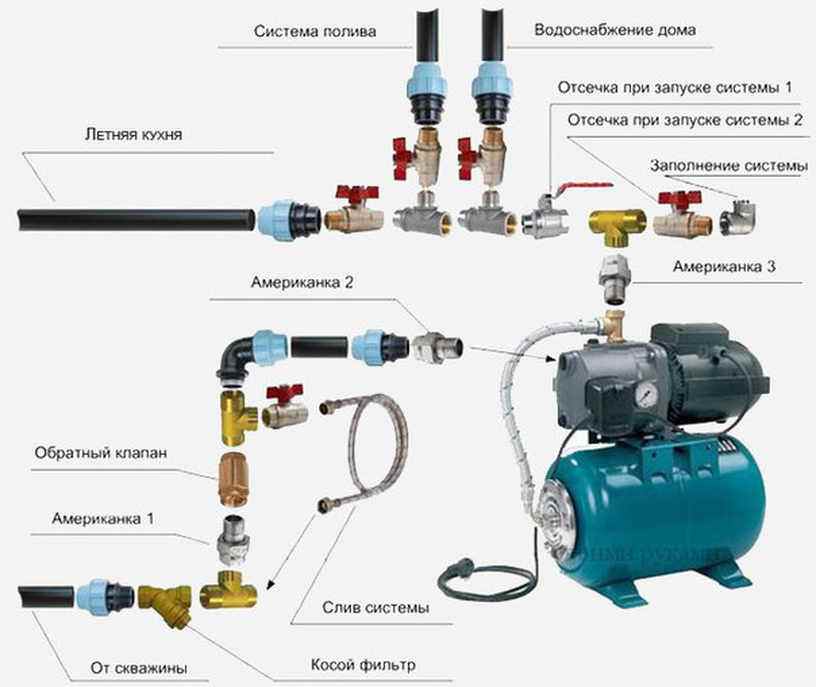

Inside the heated room, traditional mixers and taps are used. For work in an outdoor environment, elements of collapsible and shut-off valves are used, which have bronze valves, are distinguished by increased reliability. With their help, unused elements are cut off.
System pressure monitoring
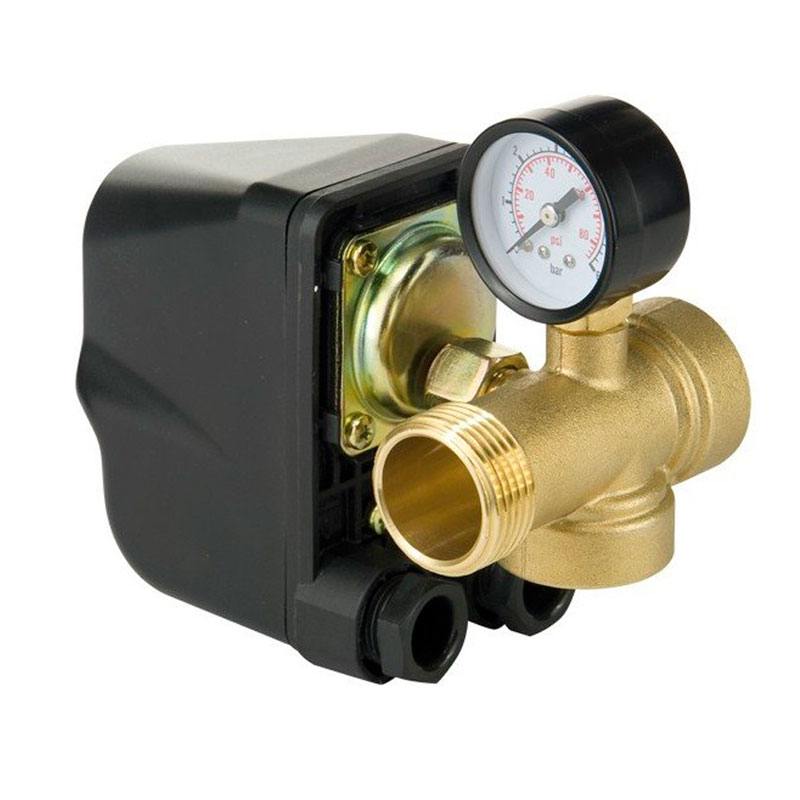

The recommended indicator of pressure in the water supply of a country house is 2.5-4 bar. Lowering it will negatively affect the functionality of the devices, and increasing it will lead to leakage. To control this indicator, a pressure switch and a hydraulic tank are used. When the pressure rises, the tank is filled and the pump is turned off. When the pressure drops, the tank is emptied and the pump is turned on. It is also useful to install a dry relay that turns off the pump if necessary.
Water storage tank
The pressure in the country water supply is provided by a storage tank, which is installed on a hill. Often it looks like a plastic barrel of sufficient volume, which is located in the attic and is reliably insulated. It is important to observe the tightness of this container.
Drain valve for system preservation
In case of prolonged absence, the system is drained. For this, a drain tap is attached below. If you turn off the pump, open the drain valve - everything will start flowing back. To prevent this, a check valve is installed, the water will flow into a special outlet.
How to organize a sewerage system for water disposal
Having equipped the cottage with a pipeline, it is necessary to provide for where the sewage will drain. A simple solution would be a cesspool. The modern option would be to install a septic tank. Which cleans the sewage and the clean liquid is returned to the soil by watering the plants. Accordingly, from time to time its filters are cleaned of contamination, consumables are changed.
Choice of pipes
How is a summer water supply system installed according to a stationary scheme? Such a system is laid in the ground, bringing only water taps to the surface. They install a water supply system in the country with their own hands from polyethylene (HDPE) or polypropylene (PP) pipes. The first of these materials will cost less. However, judging by the reviews of summer residents, it is unlikely that it will be possible to save money in this case. The fact is that you will have to buy expensive components for such pipes.


The cost of polypropylene material is higher than that of polyethylene.However, in this case, the accompanying materials will be much cheaper. But it should be borne in mind that, in order to mount the PP pipes, the owner will have to take care of a special soldering iron in advance.
Storage tank - purpose and placement options
Apart from the cost of the well itself, the pump is the most expensive element of an autonomous water supply system. In fact, this is an electric motor, and for it the most "extreme" mode is starting. Frequent stops and starts lead to a decrease in the resource.
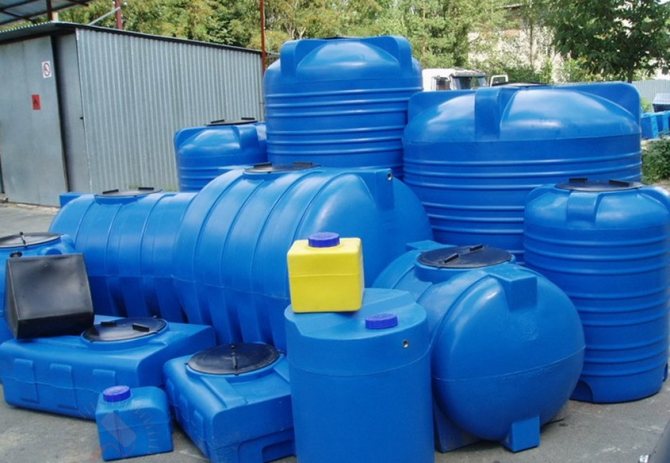

To reduce the number of activations and not turn on the pump every time the tap is opened, a storage tank is used. It accumulates the "operational" supply of water, and the automatic equipment turns on the pump when the level drops to the minimum level and turns off when the maximum level is reached. This requires a float switch (set to two levels) or a pressure sensor that will control the starting of the pump. Moreover, the control can be built on the principle of a frequency-controlled electric drive, with a smooth start and stop of an asynchronous electric motor.
There are two options for placing the accumulator: on the same level with the head of the well and in the attic or attic of the house (if they are insulated and heated).


The layout of the storage tank at the same level with the head of the well. 1. Caisson. 2. Well. 3. Storage capacity. 4. External water supply, laid below the freezing level. 5. Pumping station. 6. Internal water supply


Layout of the storage tank in the attic. 1. Caisson. 2. Well. 3. Internal water supply. 4. Storage capacity. 5. Internal piping
In the first case, to supply water to consumers, another pump is needed, or rather, a pumping station, which turns on when the tap is opened and the pressure in the pipe drops (there is a check valve and a pressure switch in the control circuit). The pressure in such a system is consistently high, but the operation of the internal water supply will depend on the power grid.
In the second case, water is supplied to the points by "gravity", but the water from the head will need to be raised a few more meters, and this is an additional load on the submersible pump. In addition, the pressure in the system will be low and depend on the water level in the tank.
Frost protection
Polypropylene and polyethylene pipes are not afraid of the cold. However, in order for the water supply system at the dacha to be used in winter, they must be laid in trenches dug to a depth of 1.5 m. This is lower than the level of soil freezing in the middle zone. When using the water supply only in the summer, the trench can be dug up to a depth of 1 m.
If the system is to be used in winter, the pipes can be insulated during the installation process. This will allow not to deepen them below the level of soil freezing. So, for heat-insulated pipes, it is enough to dig a trench 30 cm deep. The second option is to lay a heating cable. It will allow you to mount pipes directly on the surface of the earth.
The optimal pipe diameter in the house is 15 mm. For eyeliner - 20 or 25 mm. The inlet pipe must not be less than 32 mm.
Well to deliver water to the house.
If you decide to live outside the city all year round, you can equip a water supply system in the country using the well method.
The composition of the water supply system using a well:


I. The well itself. II. Submersible pump. III. Inter-house pipelines. IV. Filter. V. Complex of automatic adjustment. Vi. Taps, valves, fittings. Vii. Hydroaccumulator.
Wells are:
- Sandy. Entry of clay and sand particles is possible. A mechanical filter is required.
- Artesian. A special filter is needed to remove iron and some other trace elements. It is worth conducting a chemical analysis of the composition of the water.
It should be noted that the autonomous water supply of a country house using a well has many advantages:
- Water supplies are not limited.
- You can take a lot of water in case of increased demand.
- Long (over 50 years) service time.
To increase the life of the well, they are equipped with a pipe of the required diameter. The top is sealed with a cap that will not let dust, insects, and small particles of debris inside. Drilling is carried out only by special organizations.
The water is pumped out by a submersible pump. This operation requires careful handling of long hoses for lifting and lowering the pump and electrical cables.
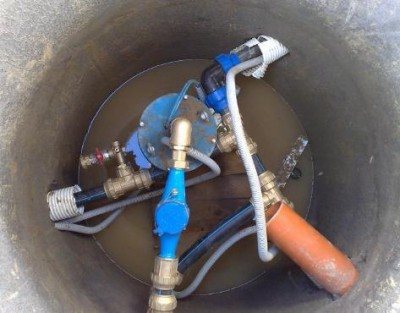

The supply of water from the well to the house passes through a pipeline. Give preference to plastic pipes. Advantages:
- Long service life;
- Not subject to corrosion;
- Low hydraulic resistance.
For use in the warm season, it can be laid at a depth not exceeding 1 meter. Do not forget to drain all the water in the fall to avoid rupture.
If you plan to spend the whole year in the country, lay the pipes, adding to the freezing depth of the local soil, another margin: at least 20 cm. The type of soil greatly affects the depth of freezing. For example, clay freezes at 1.35 m, and stony soil at 2.00 m.
It is also possible to install a heating wire inside (it is also a heating cable for a water supply system), which will make it possible to install pipes at a shallower depth. Thermal insulation will be provided by modern materials, for example, Penoplex. It will serve for more than a dozen years. Filters are selected based on water quality analyzes.
First, a filter is installed, and only after that a hydraulic accumulator is mounted, which, together with automation, will allow:
- Select the optimal pump operating mode. The number of start-ups and shutdowns that lead to equipment wear is reduced.
- The pressure is kept at a stable, uniform level.
- The possibility of a sharp increase in pressure when the pump is turned on is reduced to "no", because frequent hydraulic shocks will break the unit.


When installing yourself, do not forget about the important details, which you will need a lot. We are talking about various taps, valves, check valves and fittings that will connect all the nodes in a closed circuit.
The structure in the form of a tree, which branches from the bottom up, allows for quick drainage of water and allows for quick repairs or preservation for the winter.
DIY winter plumbing.


Arrangement in the winter season is possible if you have a boiler. The cumulative option is preferable.
The models are mostly "vertical". Volume - about 100 liters, power: up to 2.5 kW. The calculation was made for a family of 3-4 people.
The basement is rarely heated, therefore, during installation, it is necessary to lay a heating cable so that the system works without interruptions in frosts.
Sources for the winter option are different:
- Centralized highway;
- Well;
- Well.
The first and second options are preferable, since the well requires large financial costs during operation. And if it is not used for a long time, silting and stagnation of water occurs.
If you decide to carry out a winter water supply system in the country, choose polypropylene as the material. They have a lot of advantages if you carry out a comparative analysis of indicators along with metal or polyethylene pipes:
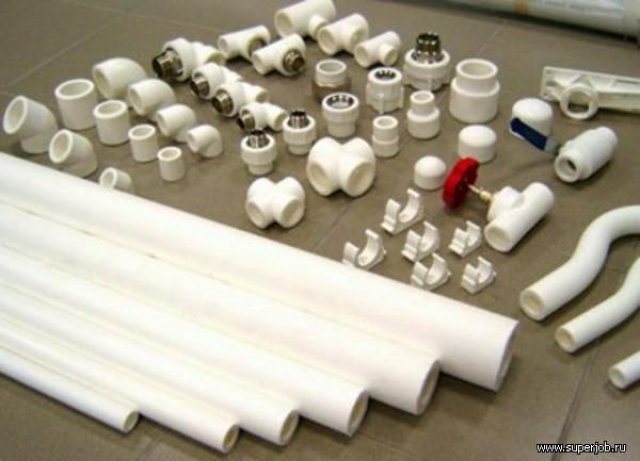

Strong, reliable. Serve for at least half a century.- They do not harm humans and the environment.
- Tightness of connections. Provides thermal welding. Water leaks are virtually impossible.
- High speed and ease of installation. It can even be laid in a hidden way.
- The cost is affordable for the general population.
Features of winter water supply in the country.
- The conservation system is the most important attribute. Before the planned departure, all the water is drained, so a gap is excluded.
- Lay below the freezing depth corresponding to the given area. The middle level is below 1.5 m.
- It is important to observe the slope in order to easily drain the water during conservation.
- A special electric heating cable does not freeze.
- The wiring method is certainly consistent.
Components of the winter water supply system.
- Modern polypropylene pipes.
- Pump (preferably submersible).
- Electromagnetic valve or drain valve.
- Hydroaccumulator.
- A special type of water heating cable.
Pre-planning
Even before buying all the necessary parts for installing the water supply system, the owner will need to study the place where the water should come from. It is necessary that the diameter of the valve and the pipes coincide with each other. After that, you should decide on the places where the conclusions will be located.
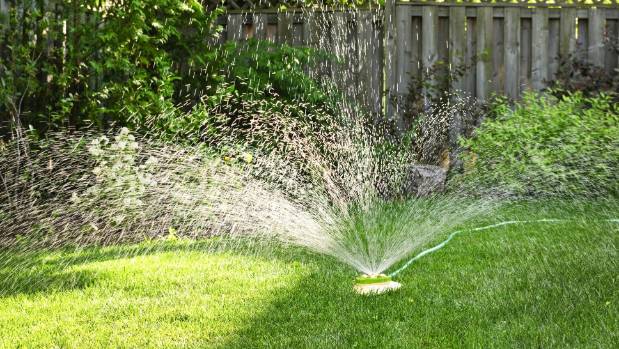

They, as a rule, are located near the site for the car, near the greenhouse, etc. After that, it is recommended to take the site plan and draw a scheme for laying pipes from the water outlet to the end point of parsing. This will allow you to calculate the amount of material for the plumbing.
Preparatory stage
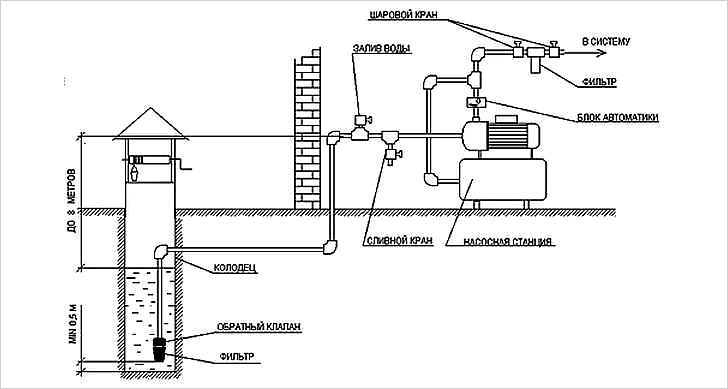

Layout of communications
If you decide to equip your country house or the entire area with a stationary water supply system, then the first step is to think over the layout of the communications itself. The owner must first decide on the source of the water. As noted above, a well can be considered the best option.
After that, all the necessary equipment is thought out. If you will only be using the plumbing for watering, then you only need a pump. If you will use the system for domestic needs, then it is necessary to provide for a filtration and water purification system, as well as devices for automatically turning on and off the pumping station.
Next, a drawing is drawn up of the location of all devices and pipe laying. The location of the water supply points to the premises and on the site itself is being considered. Also, at the stage of drawing up the scheme, you need to clearly determine the materials used and work out a plan for the upcoming work.
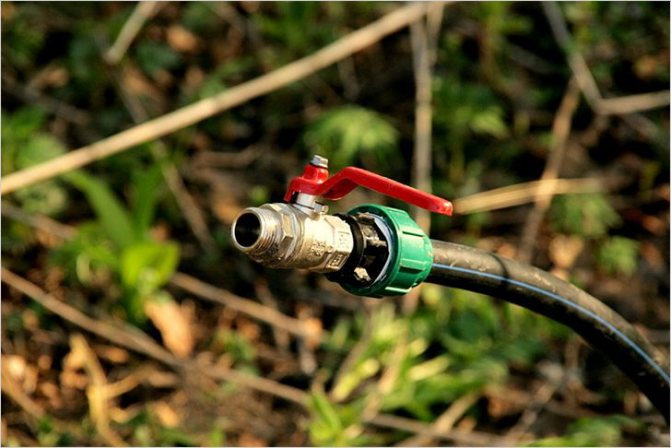

Summer option using plastic pipes
If we talk about materials, then, as a rule, polypropylene or metal-plastic pipes are used for laying a water supply system. Their cross section will depend on the individual characteristics of the water supply system. Here it is worth considering the pump power, water pressure, length of communications and other factors.
Particular attention should be paid to the choice of the pump. The choice will depend on the water source and your financial capabilities. For example, if you take water from a well, then you will need a submersible pump. For a well, you need to choose a deep unit. The best, but also the most expensive option, can be considered the purchase of a pumping station. Such a unit is already equipped with all the necessary devices for automation and water purification.
Instruments
After the final study of the scheme and calculation of materials, it is necessary to prepare all the necessary tools. Judging by the reviews of summer residents, it is quite enough for arranging a stationary water supply:
- shovels;
- adjustable wrench;
- welding machine "iron" (when using polypropylene pipes);
- roulette;
- pipe cutter;
- hacksaws;
- knife;
- sealant;
- gun for silicone.
This set is enough for earthworks, as well as for plumbing work.
Internal water supply of a private house
The internal wiring of the water supply system in a private house, in principle, does not differ from the standards of a city apartment.
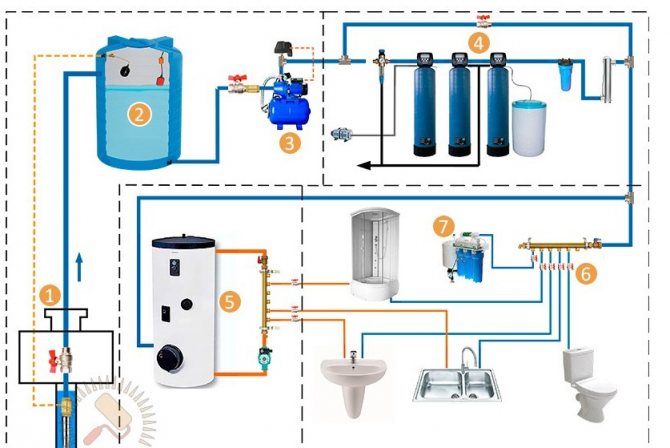

Plumbing diagram in a private house with a well. 1. Well. 2. Storage capacity. 3. Pumping station. 4. Water treatment. 5. DHW circuit. 6. Internal water supply with collector wiring. 7. Reverse osmosis purification unit
If the storage tank is on top, then use the upper wiring without pumping water.
When placing the accumulator in a caisson or basement, use the lower wiring with pumping water.
The main advantage of a private house is the ability to use collector, rather than sequential wiring. In this case, a separate pipe is led to each consumer, and they do not branch off from the common pipe using a tee. And then the pressure (pressure) of water at the point of consumption will not depend on the use of water by other consumers up to this point - only the distance from the pumping station and the difference in level will affect.
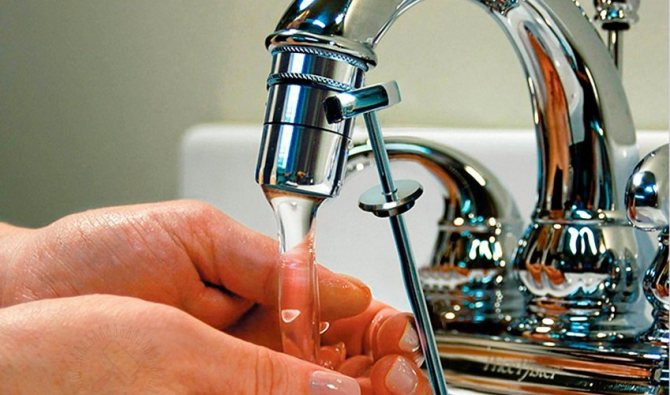

Rising water
What is the next step in arranging a water supply system in the country? Having decided on the point of water intake, you will need to raise the liquid to the surface. For shallow wells, surface pumps are usually used. They can be used when the distance from the water source to the country house is no more than 50 m.
The lifting of liquid from deep wells or a filter well is carried out using ejector surface pumps. Well, what if there is an artesian-type water intake point on the site? In this case, a special submersible pump is used, which is capable of lifting liquid from a depth of 100 m.
If, when arranging a water supply system in a country house, the price for the owners does not really matter, then they can purchase an autonomous water supply system (CAB). In this case, the rise of the liquid to the surface will be automated. The minimum cost of such a structure will be 20 thousand rubles.
Required tools and materials
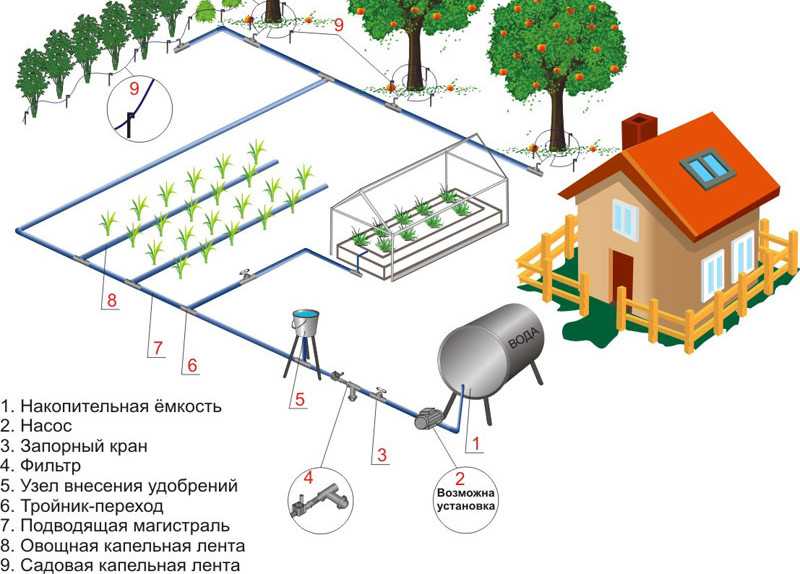

To install a reliable summer water supply system, you need to use the following tools and materials:
- Devices designed to automate irrigation, as a rule, are soil moisture sensors or a timer.
- Tap connection and hoses. On the one hand, it is equipped with a "brush", which is inserted into the pipe, and on the other with a spring grip.
- Watering and sprinkling heads.
- Sprayers and spray guns that are equipped with couplings. When changing the nozzles of the irrigation equipment, they automatically shut off the water supply.
- Special equipment designed for the organization of drip irrigation.
If there is no connection to the central water main at a summer cottage or a personal plot, wells and wells are used as a source of water. Depending on the depth of the source, it is necessary to additionally install a submersible or surface pump.
Water supply from a well
What is it? The price of water supply from a well in the country is usually relatively low (about 7-10 thousand rubles). Moreover, it may well be done by hand. And this is confirmed by the reviews of summer residents. Let's get acquainted with the step-by-step instructions for such works:
- First of all, the submersible pump should be lowered into the well. When doing this, make sure that the power supply cable and the supply hose are not taut. The cable on which the submersible pump is attached must be fixed to the surface. To take water into the supply hose, a head must be installed.
- A HDPE pipe is laid along the bottom of the trench, the depth of which should be 50 cm. The water supply system in the country from a well, as a rule, is constructed using such low-pressure polyethylene elements. In parallel, a second pipe must be laid into the trench, inside which there is an electric cable.
- The next step in arranging a HDPE water supply system in the country is to connect its further part with the supply element. This work is done using a check valve. This detail will prevent water from draining into the well. In the same area, a filter for coarse mechanical cleaning of the liquid should be installed.
- When arranging a water supply system in a country house with your own hands, the next paragraph of the instructions provides for work on the institution of a supply hose in the house. In this case, the dispensing inlet unit must be equipped with a pressure switch, a pressure gauge, and a fine filter. Further, the entire system can be connected to the power supply.
- After passing through cleaning and filtration, the water must enter the accumulator. The main purpose of this element is to maintain the required pressure in the system, which saves pump operation time.
- Inside the house, the water supply system is being laid in the country (from polypropylene pipes). It is equipped along the walls from the dispensing unit to the water heater, sink, shower cabin and other points of analysis.
What pipes to choose for water supply in the country
A decade and a half ago, no questions arose: there was no alternative to steel pipes. Today, metal is almost never used for the suburban water supply system: it is expensive, welding is needed for installation, and modern pipes rust quickly. There is a much more practical alternative - plastic pipes. They are the best solution for the country water supply system: they certainly do not rust, some are also not afraid of frost. But plastic is different, as are the products made from it.
HDPE pipes
Most often, HDPE pipes - low-pressure polyethylene are used for water supply in the country. They are attractive in that they can be assembled without any additional devices. Fittings for assembling the HDPE water supply are threaded and simply twisted by hand.
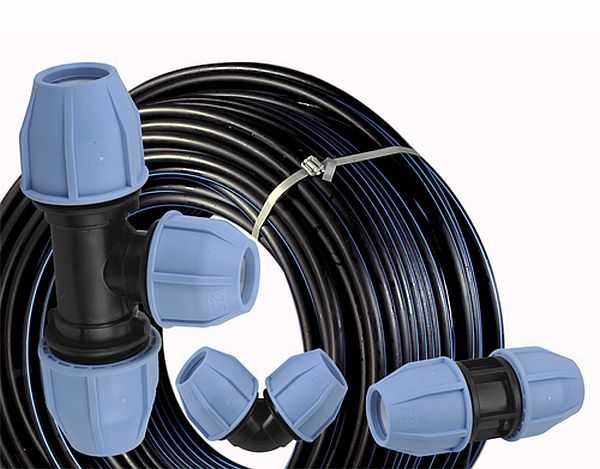

HDPE pipes for water supply systems are produced in coils or in lengths (depending on the diameter)
Why are HDPE polyethylene pipes so good that they almost replaced metal ones? In addition to convenient installation, there are a number of other advantages:
- Subject to the rules of operation, the service life is 50 years. This figure has not yet been verified, but it is impressive.
- They do not rot, rust, and are resistant to chemical environments.
- They can be used at temperatures down to -60 ° C.
- When the water freezes in them, they do not burst - they stretch, then after thawing they take the same size.
- Their inner surface is perfectly smooth. For a water supply system, this is important for two reasons: there is less pressure loss during transportation and deposits do not accumulate on the walls, they are simply carried away by the stream.
- With their help, it is very easy to make a water supply system in the country with your own hands, just like making changes later.
- It is possible to use HDPE pipes for the construction of summer and winter water supply systems.
- Convenient assembly methods: welding or on compression (threaded) fittings.
There are disadvantages, but there are few of them:
- they do not tolerate heat well (except for pipes made of cross-linked polyethylene), therefore they are used only for transporting cold media;
- when compared with metal, they have a lower strength - you cannot walk on them.
HDPE pipes can be welded with a special device, or they can be connected using compression fittings. For the suburban water supply, pipe pieces, tees, adapters are connected using threaded connections. Although such a connection seems unreliable, it can withstand much more than the 2-4 atm that you can create to the maximum. See the video for the test results of connections on threaded fittings. At the same time, see their design and installation principle.
HDPE pipes with blue lines are suitable for water supply. They are designed for cold water. If the lines are yellow - they cannot be used for water supply - they are intended for gas. They contain special additives that make the water unusable.
There are several gradations for working pressure:
- L - lungs, withstand up to 2.5 atm;
- SL - medium-light - up to 4 atm;
- C - medium - up to 8 atm;
- T - heavy from 10 and above.
For the installation of an external (street) water supply system in the country, HDPE pipes of class C and SL, with diameters of 32 mm, 40 mm and 50 mm, are used. When choosing, you still need to decide on the density.
There are three more grades of polyethylene: PE 63, 80, 100. These numbers mean density. The denser the material, the more durable the product, but also the higher the price. For example, one running meter of 32 mm PE 80 pipe costs from $ 4 (and more depending on the wall thickness). The same diameter, but made of PE 100 already from $ 7 per running meter.
Do you need a high density when installing a water supply system at a chacha? Maybe yes. Due to the higher density, the pipe walls are made thinner, which reduces their weight. If water in the country comes from a well or well, weight can be an important factor - there will be less problems with securing the pipe down.
PVC pipes
For water supply in the country, they also use PVC pipes - polyvinyl chloride. They are cheaper than HDPE, they are connected using cold welding - with glue. The seam turns out to be reliable - it tolerates pressure up to 12-16 atm, the service life is declared the same: 50 years.


PVC pipes are inexpensive, but they cannot be scratched
Slightly worse performance than low-density polyethylene:
- Temperature range of use from -15 ° C to + 45 ° C.
- Does not like freezing - elasticity decreases, the material becomes more brittle.
- Medium sensitivity to ultraviolet radiation.
The rest of the advantages of plastic pipes are inherent in PVC in full:
- Ease of installation, the possibility of bending.
- Smoothness of the inner surface.
- Resistant to oxidation (does not rust) and chemical environments.
- Low-combustible.
The disadvantages of a suburban PVC plastic water supply system are as follows:
- Upper temperature limit + 45 ° C, short-term possible up to + 65 ° C.
- Difficult to dispose of as it releases volatile chlorides on decomposition, which are harmful to health and the environment.
- When scratches appear on the surface of the pipe, its strength is significantly reduced. Therefore, it is undesirable to use PVC pipes for open laying of a water supply system in the country. When laying underground, a protective shell or laying in a sewer is mandatory.
Since scratches and cracks greatly reduce reliability, threaded connections are not possible. When docking with metal pipes or equipment entrances, this is a big problem. And if piping around the site is not difficult, then piping equipment is a serious task. This drawback limits the use of this material for external water supply systems, because PVC is more often used for internal wiring, where the risks of scratching are minimal. They are also used more often for laying sewers.
How to connect PVC pipes, see the video. The connection is really reliable. This conclusion is based on personal experience: a comb of cold water was assembled in the apartment. It stood for about 10 years without any problems, until all the wiring had to be redone due to redevelopment.
Polypropylene (PPR)
Another material that can be used when laying a water supply system in the country with your own hands is polypropylene pipes. They also belong to the category of plastics. There is for cold (with blue stripes) and hot water supply, as well as for heating (with red stripes). They are connected using soldering and couplings - there are special soldering irons, with the help of which the plastic is heated on two parts, then they are connected. After a couple of minutes, the connection becomes monolithic. It is not even necessary to buy a soldering iron (it costs about 2-5 thousand rubles) - it is rented in the same stores where pipes and fittings for polypropylene water supply are sold.
The disadvantage of polypropylene pipes is essentially one - expensive fittings. For example, a running meter of a pipe for cold water supply 32 mm in diameter (wall thickness 3 mm) costs about $ 2, a coupling for connecting two segments of the same diameter is $ 1.2. Since the PPR pipe does not bend, everything is assembled using couplings, corners, etc. As a result, the water supply will be not very cheap, but reliable. After all, not only household water pipes are collected from this material, but also industrial routes.
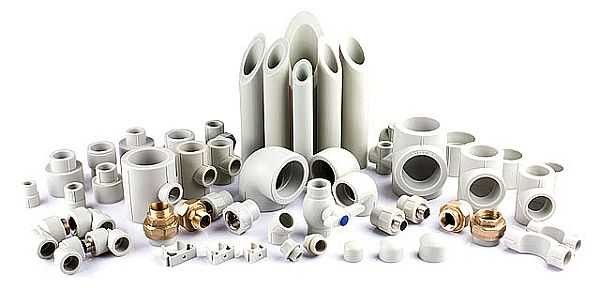

Polypropylene pipes for country water supply - a good, reliable option
You can read about drip irrigation systems and how to make them yourself in this article.
Well water supply
If the owners of the summer cottage have drilled a well on it, then most often they decide to install a stationary fluid supply system. How to organize such work correctly? The water supply system in the country from the well is easy to equip, adhering to the following points of the instruction:
- Excavation works. Taking a shovel in hand, the owner will need to tackle the trench in those places where, according to a pre-planned plan, the water supply will pass.
- Installation of the socket. At the next stage of arranging the water supply system, you will need to take care of the pump's power supply. To do this, you need to dig another trench in which the electrical cable will be laid. Next, a socket is mounted to connect the equipment.
- Installation of the pump. This equipment can be located either outside the well, or inside it. Everything will depend on the type of pump.
- Connection of pressure switch, pressure gauge and accumulator. All these elements must be installed to the pump, and then a pipe must be connected to it, which will distribute water to the points of consumption.
- Installing the drain valve. This element is required to perform system conservation actions.
- Installation of a water supply system. All pipes must be laid along the bottom of the trench. At this stage, you need to take care of their insulation.
- Conclusion of external points of water intake.
- Connecting the system and checking its performance. After the water runs through the pipes, you need to make sure that their joints are tight. Pay attention to the places where the equipment was connected.
- If the system is stable and there are no leaks, the trench can be buried.
- Internal wiring device. Plumbing in the house can be installed from plastic pipes. This material does not rust, so it can be deepened into the walls. At this stage, faucets and plumbing fixtures and water heaters should be installed.
How to make a water supply system in the country from a well so that the water in it is suitable for drinking? To do this, it must be cleaned.
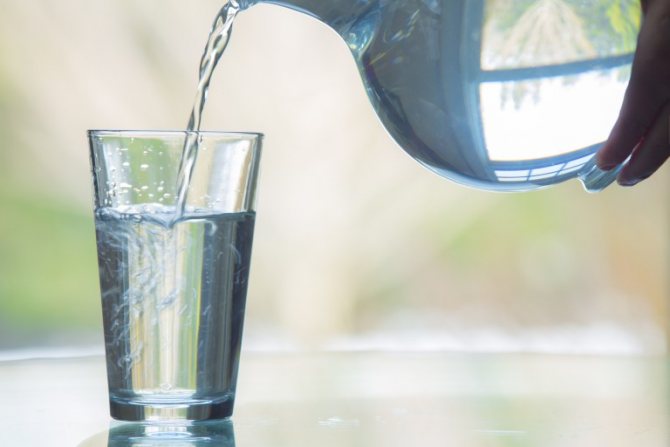

This is done using flow filters or using a reverse osmosis system. By the way, in the latter case, the water at the molecular level is completely purified from the impurities in it. However, judging by the reviews of summer residents, the purchase of such a system, as well as its maintenance, is not very cheap.
Installation process of HDPE pipes


Despite the fact that the process of installing polyethylene pipes is quite simple, compliance with technical standards is required to create a durable and reliable functioning system. For work, you will need a set of tools, pipes and connecting elements - fittings and extensions (tees, corners, plugs).
Instruments
The set of tools for connecting HDPE pipes depends on how you are going to do it. When connecting pipes using compression fittings, you do not need any special tools, except for a fine-toothed hacksaw or special cutters for cutting pipes into desired lengths.
When "hot" joining HDPE pipes, you will need a special electrical device - a welding iron. This device heats the ends of the pipe and couplings to the melting temperature, after which they are inserted into each other. You will also need special pipe cutters that allow you to quickly cut pipes at an angle of 90 °.
Fitting


Connecting fittings for HDPE pipes are of two types:
- Compression.
- Diffusion
Compression couplings are equipped with threaded connections and rubber seals. The two halves of the coupling are put on the ends of the abutting pipes, after which they are connected by a thread, forming a sealed joint. Diffusion couplings are used when welding pipes with a heating device. Recently, electrofusion couplings have appeared on the domestic construction market, connecting pipes by heating them with current.Electrofusion couplings have terminal outputs on their surface that are connected to a special welding machine, which heats them.
DIY installation of HDPE pipes for water supply
Installation should begin from a water supply source - a well, a water column, a main water supply system. To speed up the work, and avoid possible mistakes, you should draw up a pipeline diagram in advance. In accordance with the diagram, the required number of pipes, additional elements and couplings should be purchased.
A country water supply system made of polyethylene pipes is easiest to install using compression fittings. The process does not take much time and does not require any special skills. The compression couplings are first disassembled and screwed onto the pipe ends to be connected, installing the gasket and clamp. The connection is secured with an external clamping nut. When tightening it, you cannot use adjustable wrenches and other improvised tools. Tighten the nut only with the muscular force of the hands to avoid damage to the coupling.
Do-it-yourself installation of the pipeline is possible with the help of diffusion couplings. Here, for the connection, you will need a special apparatus - an electric heater-iron, equipped with nozzles of the required diameter. The device is connected to the network, the required temperature is set on the heating relay, after which the ends of the pipe and couplings are inserted into the heated nozzles. After melting the ends to be joined, they are inserted into one another and fixed for one to two minutes.
It is also possible to solder HDPE pipes in the joint, without using couplings. This happens with the help of a special end heating device equipped with holding devices. This method is usually used for large diameter pipes. When soldering pipes, make sure that the ends to be connected are free of dirt and moisture, otherwise the connection will not be tight. When working with electric heaters, it is necessary to observe safety measures, use protective clothing and protective gloves.



